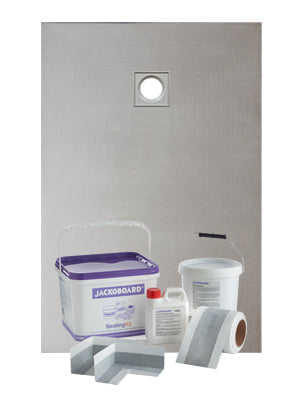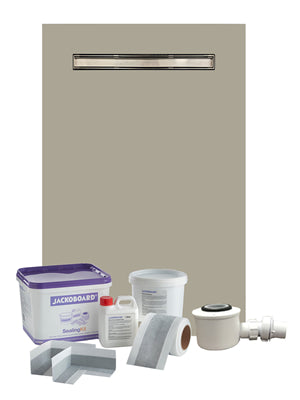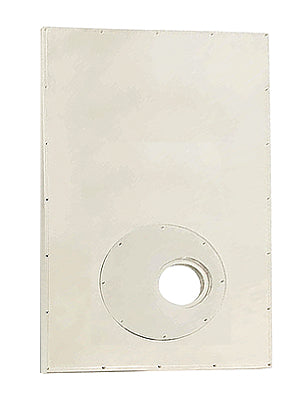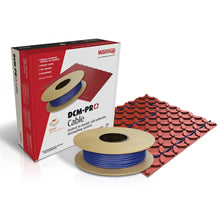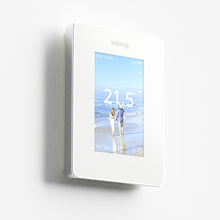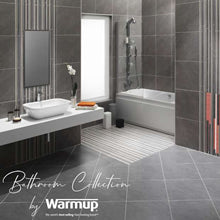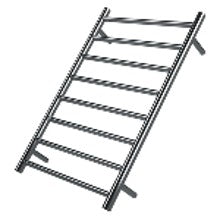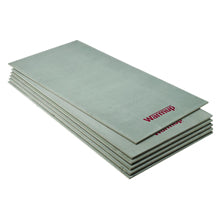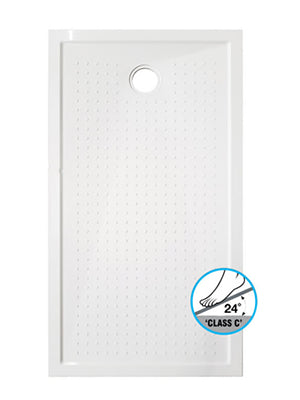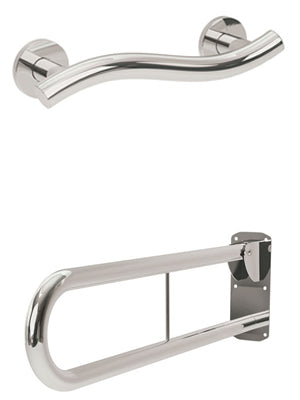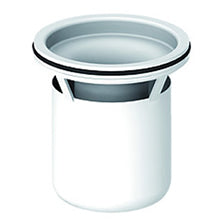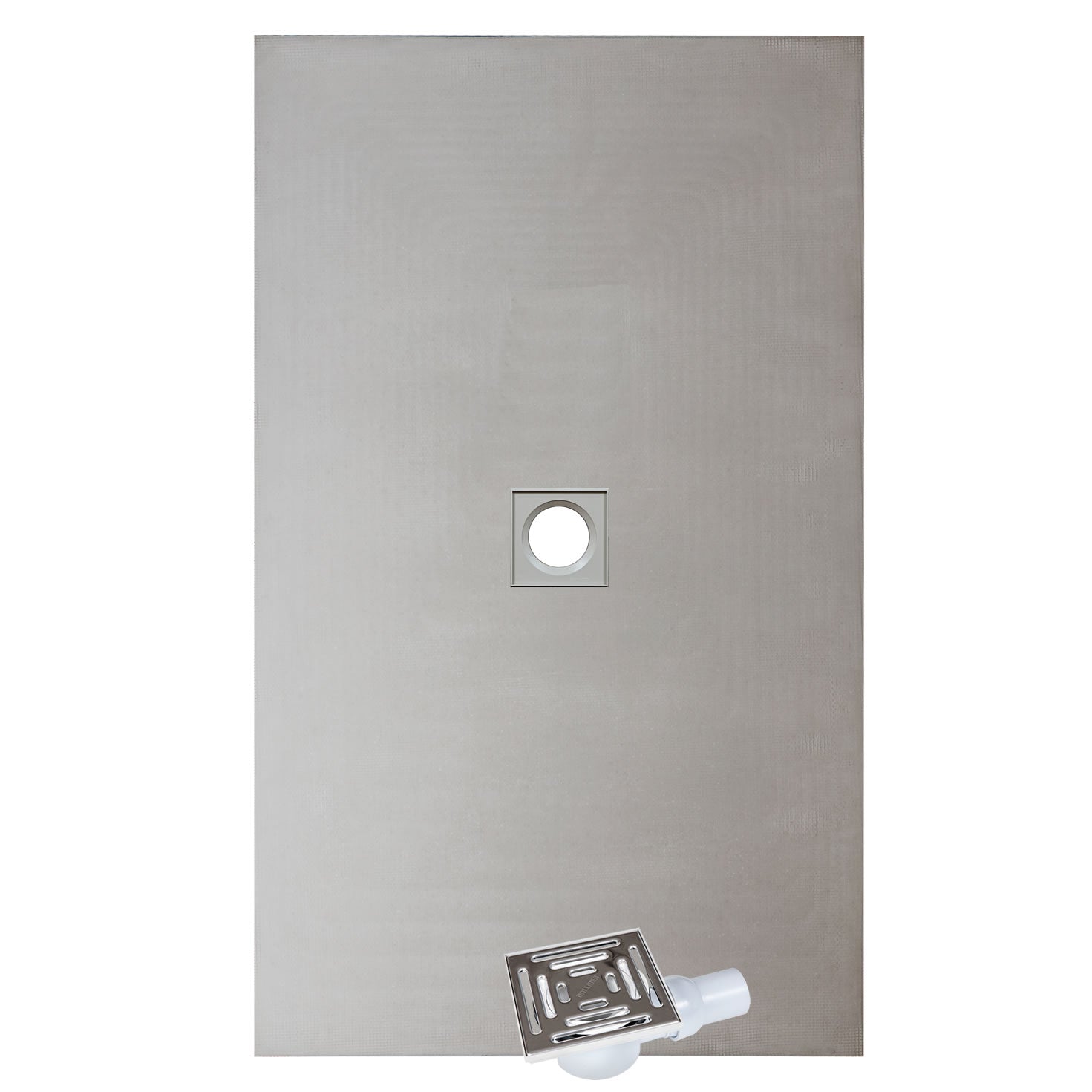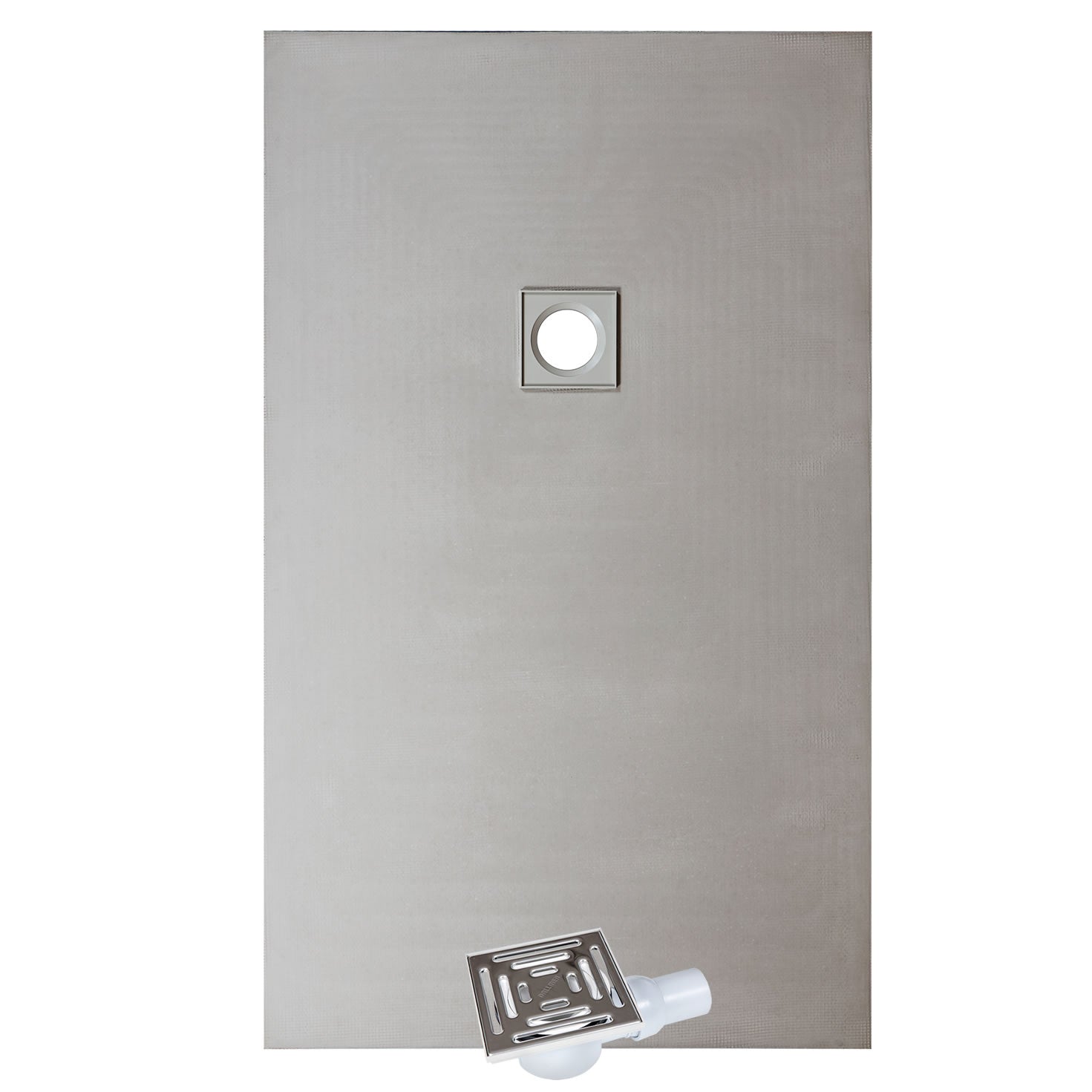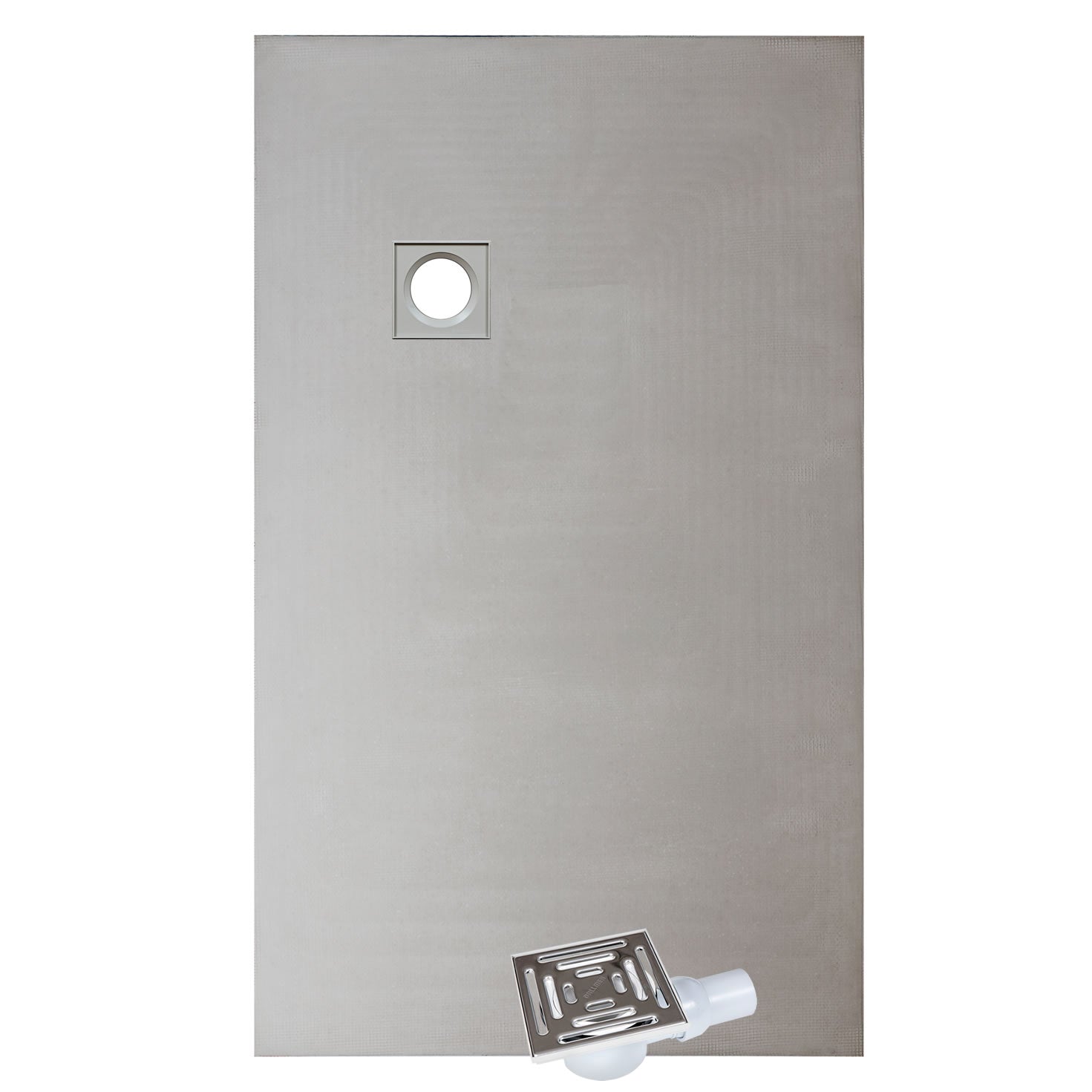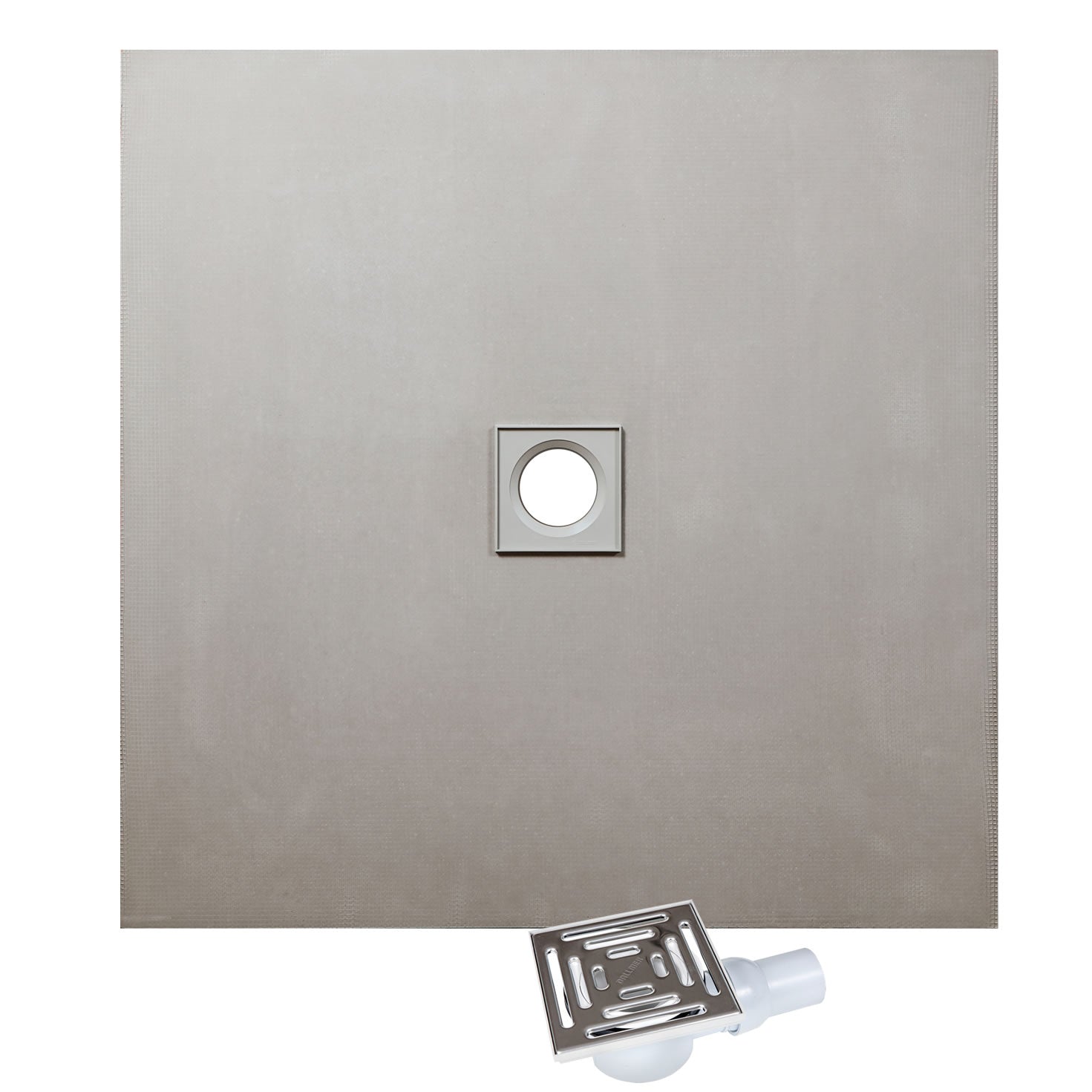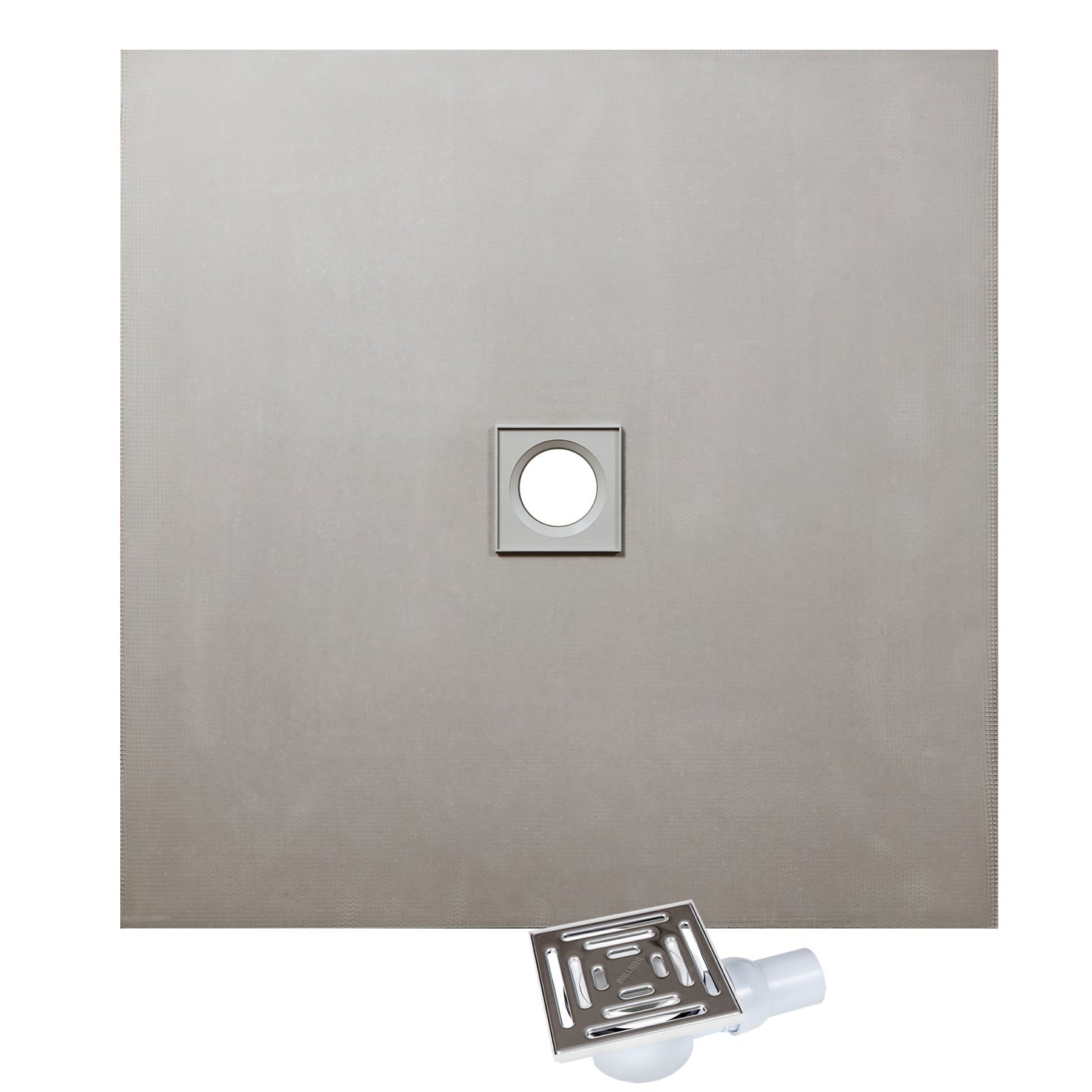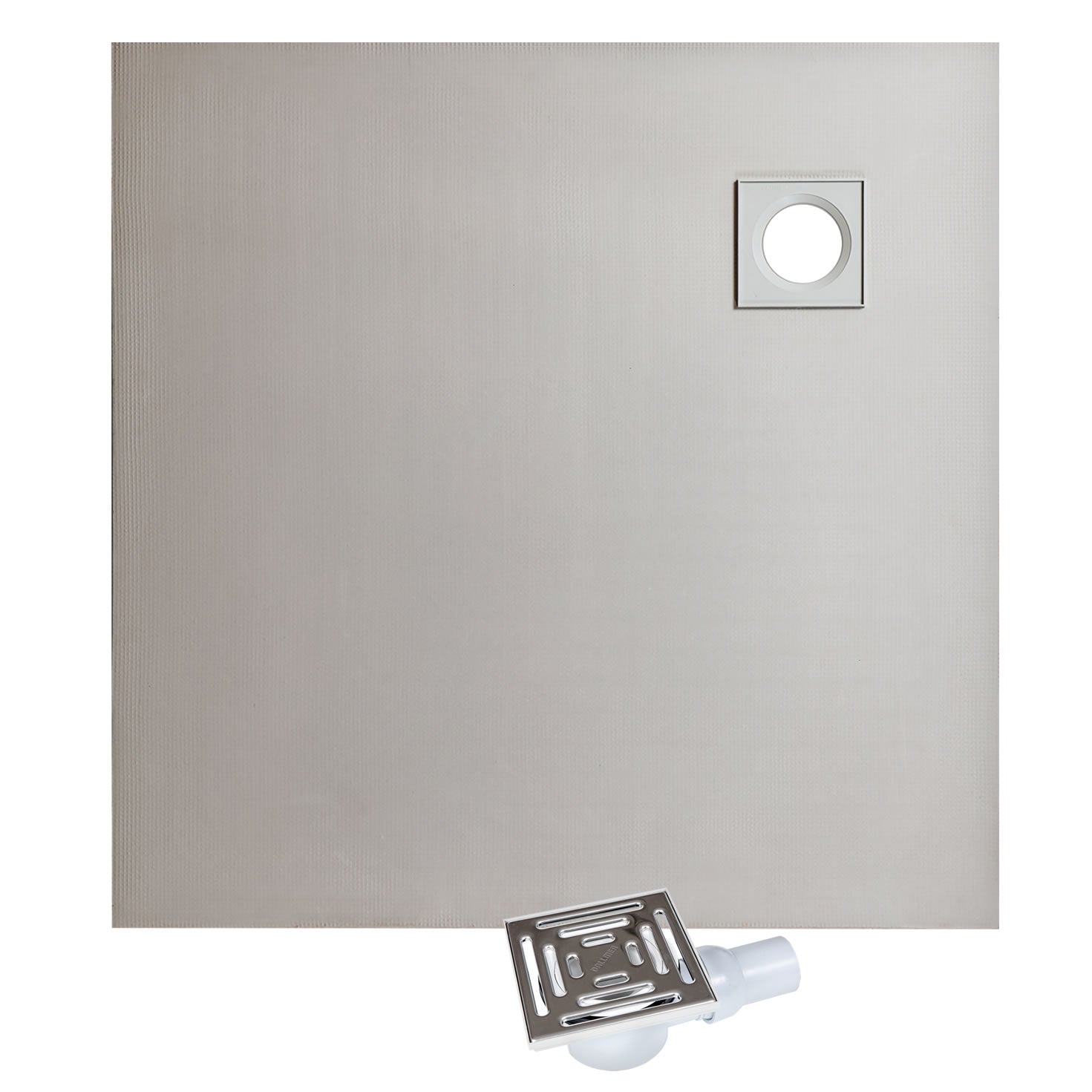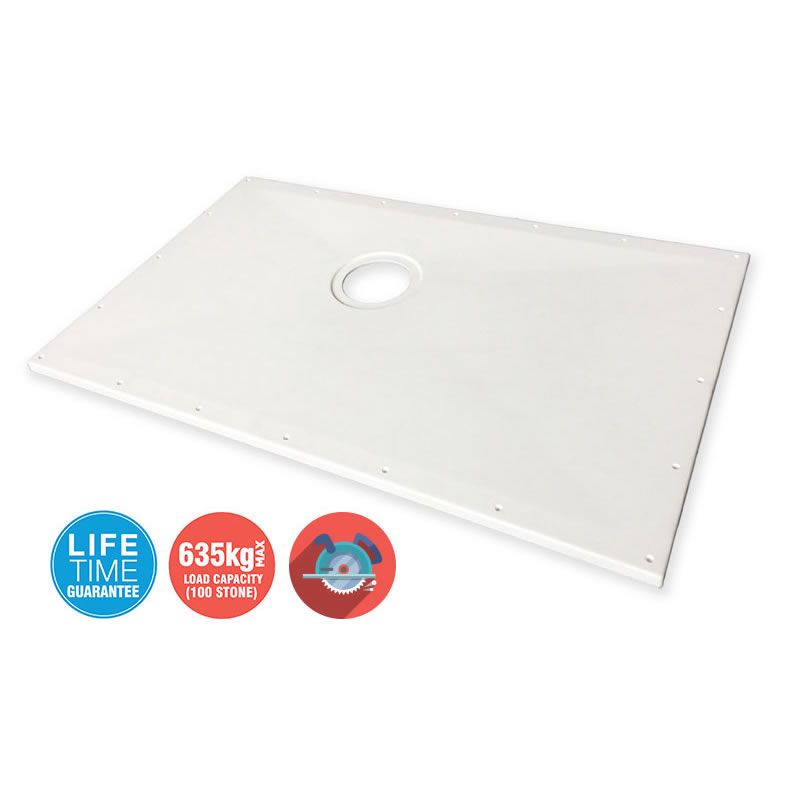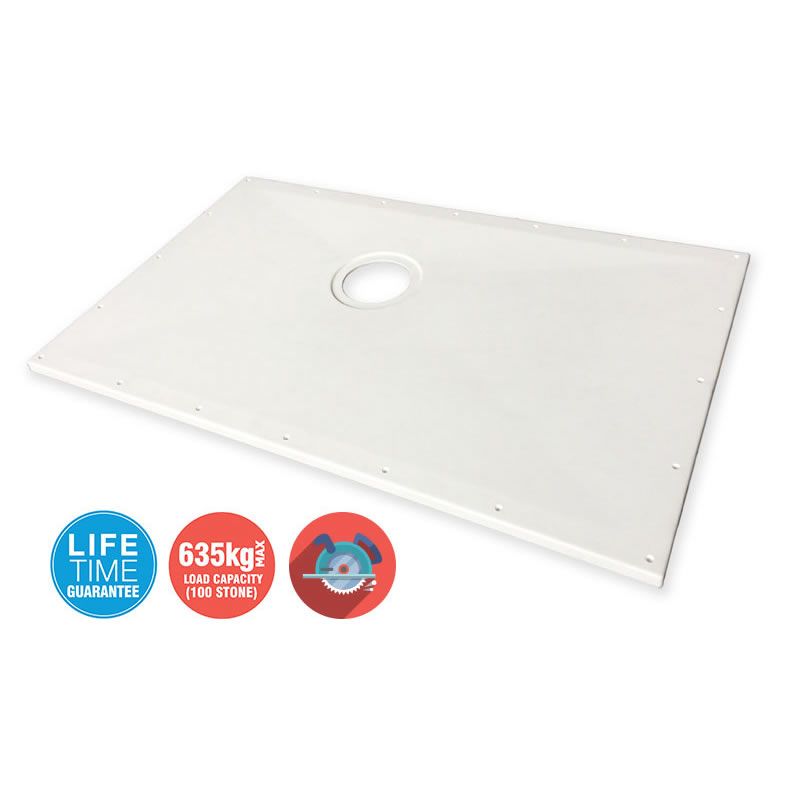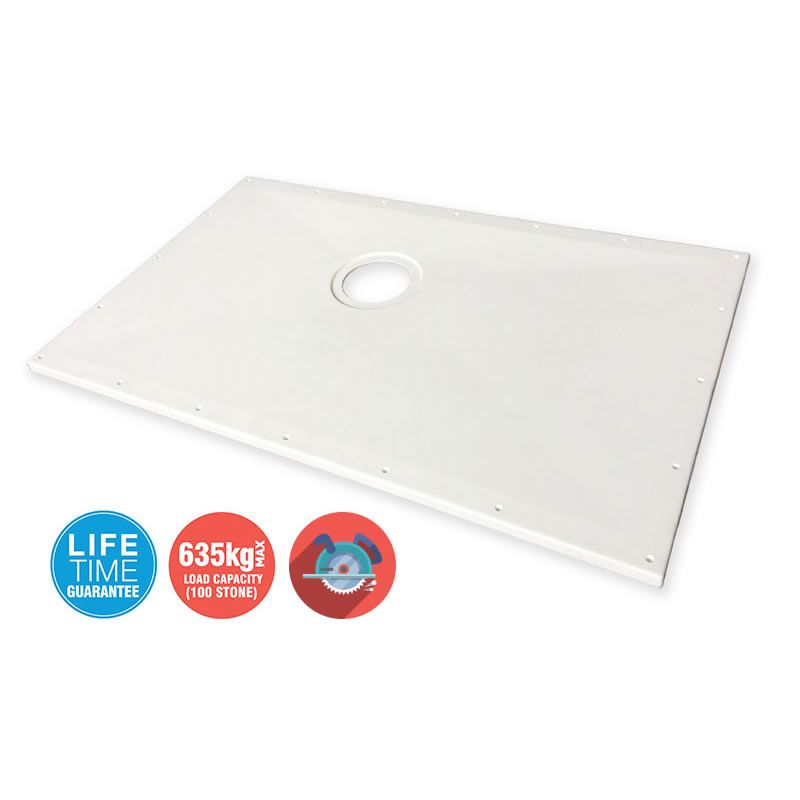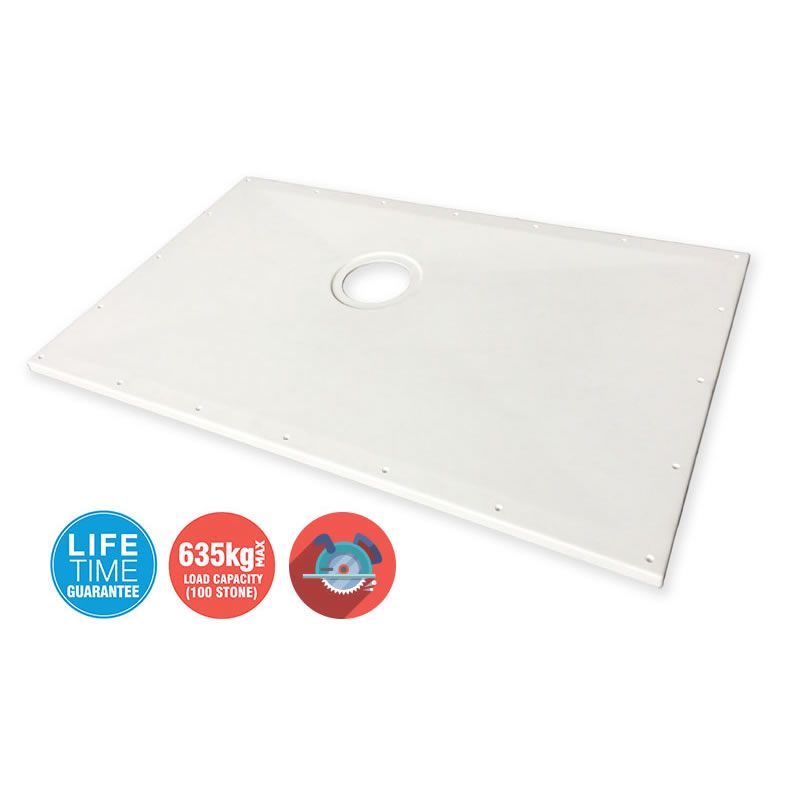When it comes to wet rooms and walk in showers one of the biggest considerations is the material that the floor will be finished with, the choice of flooring finish will largely dictate the type of under tray / wet room tray that can be used with the chosen flooring type.
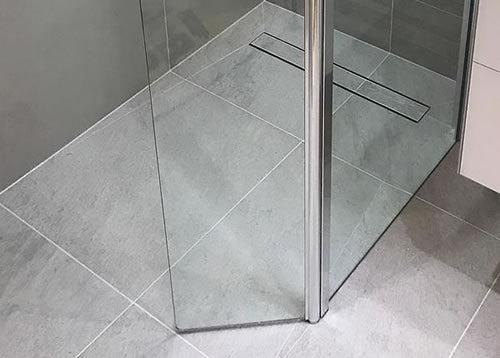
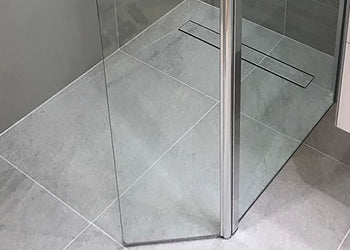
Tiled Floor
The most common choice of flooring finish when it comes to a wet room or walk in shower is tiles. A tiled floor finish also means that you have the widest choice of under tray / wet room tray available as nearly all wetroom trays are designed to accept at least a tiled floor finish.
The vast multitude of tile styles, shapes and sizes offers the greatest scope for design and aesthetics of the wet room. In addition, a well prepared, installed and tiled wet room, that is cared for should last through the rigors of daily life for a lifetime.
When choosing tiles as the wet room flooring material it is important to take a few factors into consideration:
Type of Tile:
The most suitable types of tiles for a wet room floor are Porcelain, Natural Stone or Mosaic tiles. Because of there construction we do not recommend the use of ceramic tiles on a wet room floor, they are however perfect for the wet room walls.
Porcelain tiles, including large format porcelain tiles are perfect for a wet room. If large format porcelain tiles are chosen a ‘envelope’ cut will need to be used so that the laying of the tiles follows the fall of the wet room tray to the drain.
If using a linear drain with a tile-able insert an unbroken look can be created on the floor adding to the aesthetics of the room.
Natural Stone tiles have all the advantages of porcelain tiles, however because of their very nature they may require sealing before use to ensure that they do not absorb any water.
Mosaic Tiles are ideal for following the contours of the wet room tray to the drain, and thus retaining the full fall for maximum drainage effect.
As mosaic tiles are surrounded by more grout lines they tend to offer better slip resistance too.
Some people opt to just tile the shower area in mosaic tiles for the above reasons, and the remaining floor area in a larger scale tile.
As the mosaic tiles are mostly supplied on a net backing, they are quick and easy to lay. If the mosaic tiles are natural stone, they may need sealing prior to choice.
Slip Rating:
Please see paragraph towards end of article.
Tile Thickness:
The recommended tile thickness will vary depending on the type of wet room tray that is being used, this will depend on drain depth above the tray surface and the depth of the drain insert (if tile-able) its self.
In all circumstances the tile should not be thinner that 6mm depth. Below 6mm and the tile will be prone to cracking. 10mm tiles are the better choice as they allow for a sufficient bed of adhesive, as well as being thick enough to stand the daily traffic of the wet room.
Underfloor Heating:
Tiles are perfect for use with underfloor heating (UFH) and can make for a very pleasant surface for bare feet when used with UFH. It’s important to remember to check that the chosen base is also suitable for use with underfloor heating.
Ideally underfloor heating should be placed between the wet room tray and the tiles, as some trays have insulating properties you may experience a cool spot if the UFH is placed beneath the tray.
Bear in mind that the thicker the tile the more heating time it will take to reach the set temperature.
Other Considerations:
If you are tiling on to wooden floorboards it is vital that the floorboards are over-boarded with a suitable material first. Ideal materials for over-boarding is insulated tile backer board. Insulated tile backer board is ideal for use with underfloor heating as it helps to keep the heat in the room, rather than going into the void between the floor and ceiling.
Trays Suitable For Tiled flooring
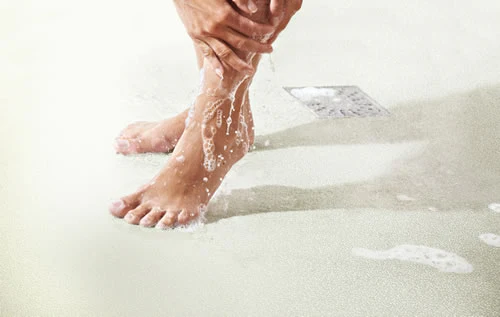
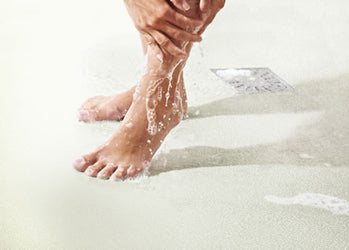
Vinyl flooring
A vinyl floor finish (sometimes referred to as Altro) is commonly used in a wet room or walk in shower environment when the risk of slipping is greater as the anti-slip vinyl covering offers greater slip resistance over most tile types.
However a vinyl floor need not be the sole preserve of ‘care wetroom’, with the styles and designs available from the leading manufacturers a vinyl flooring wet room is not out of place in the family home.
One of the major advantages of a vinyl floor covering is that if professionally fitted, with sealed joints, it acts as the waterproofing barrier for the floor.
Like a tiled floor finish there are important factors to take into consideration:
Choice of Trays:
Because a vinyl floor forms the waterproof barrier for the wet room it is essential that where it meets the drain is 100% sound. This is achieved by clamping the vinyl covering securely into place around the drain aperture. As such as specialist vinyl compatible drain is required. These drains are usually only available with the more specialist wet room trays that are specifically designed for this purpose.
Because of this reason there is less choice in the ranges of vinyl compatible trays available.
Slip Rating:
Please see paragraph towards end of article.
Underfloor Heating:
Like a tiled floor finish, underfloor heating should not cause an issue for vinyl flooring, in fact it will enhance the flooring with warmth underfoot.
However, because solvent based adhesives are used to adhere the vinyl to the floor and solvent wealds are used for the joints it is important to consult with the flooring manufacturer/supplier/fitter regarding maximum temperatures and wattages.
This should be done prior to fitting of the underfloor heating and the vinyl flooring.
TRAYS SUITABLE FOR VINYL FLOORING
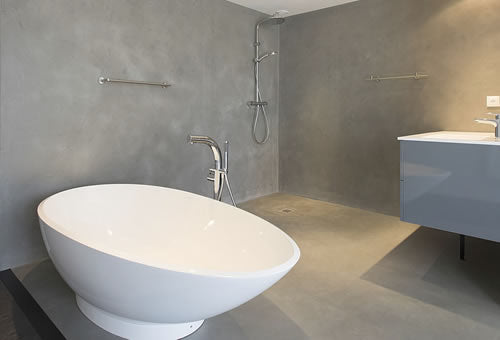
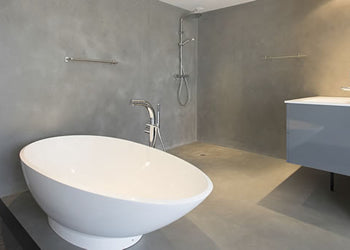
MICROCEMENT FLOOR FINISH
Microcement is a fairly new product for floor finishing. Microcement is a composite based on cement. It contains water-based resins, colour pigments and additives to produce a decorative finishing layer. As it does not require joints, Microcement can be used to create a smooth seamless floor, it can also be used on walls to create a complete look.
Available in a wide variety of finishes and colours Microcement is available from numerous suppliers. However, as the finish is key, it may be a job better left to professional persons.
Microcement is normally applied in a layer approx. 2/3mm thick, as it has self-levelling properties it is not suitable for use with most wet room trays or bases as it will reduce / infill the all-important fall to the drain, meaning that the shower water will not drain away effectively.
The most suitable product for use with Microcement would be a floor former for use with screeds, such as the Impey Aqua Grade floor former. This could be part filled with a normal screed and then finished with Microcement to create the finished floor layer.
Alternatively a linear drain channel could be utilised, with the installer creating a fall to the drain with the microcement.
Another option to forming the shower area out of Microcement with the required fall to drain, would be to use a wet room tray which is then tiled to follow the fall, and then simply finish the remaining floor area in a level Microcement coating.
Slip Rating:
Please see paragraph towards end of article.
Other Considerations:
As the fall to the drain is a critical element of all wet room floor finishes, we strongly advise that professional help is sought in the creating of a wet room floor using Microcement products.
Underfloor Heating:
Underfloor heating can be used with Microcement, products such as Warmup Sticky Mat and Warmup DCM-Pro are an ideal choice as the stat will help to regulate the temperature to a suitable level for use with the microcement.
TRAYS SUITABLE FOR TILED FLOORING
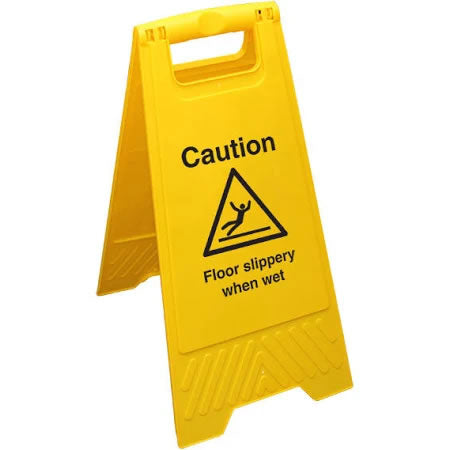
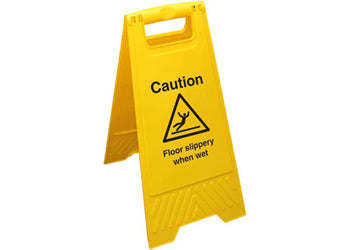
ALL FLOORING TYPES – SLIP RATING:
For all floor types you will also need to consider the slip rating of the material. Obviously, a wet room / walk in shower is a wet environment, and the chance of slipping on the floor is greatly increased compared to a dry floor, therefore it is important to consider how easy it will be to slip on your chosen flooring material.
Slip Rating:
The health & Safety Executive states:
‘The floors specified for barefoot areas should have good slip resistance in wet conditions for both shod and barefoot users.’
https://www.hse.gov.uk/pubns/geis2.pdf
Most flooring materials (although not all) will be classed with a slip rating to illustrate how anti-slip they are, and therefore in what situations they should be used.
The accepted test standard DN51097 rates flooring A,B, or C for a barefoot user with the flooring material covered in water. A being the most slippery and C the least Slippery:


In the table a CoF (Coefficient of Friction) value above 0.36 are likely to have a low slip potential.
For a wet room or walk in shower environment we recommend a DIN51097 rating of at least B with a minimum CoF (Coefficient of Friction) value of 0.36 and above.
It is highly likely the alternative slip test of ‘R’ ratings may also be referenced. However, the ‘R’ rating is tested on shod (shoes worn) feet, and therefore is not realistic of a bare foot.
If the ‘R’ rating is referenced you should be looking for a rating of at least R12 upwards.
If the risk of slipping is a key concern (such as with young children and elderly users) then it may be better to opt for a vinyl anti slip flooring which tends to offer a greater protection against slipping and is also softer to land on should a fall unfortunately take place.
